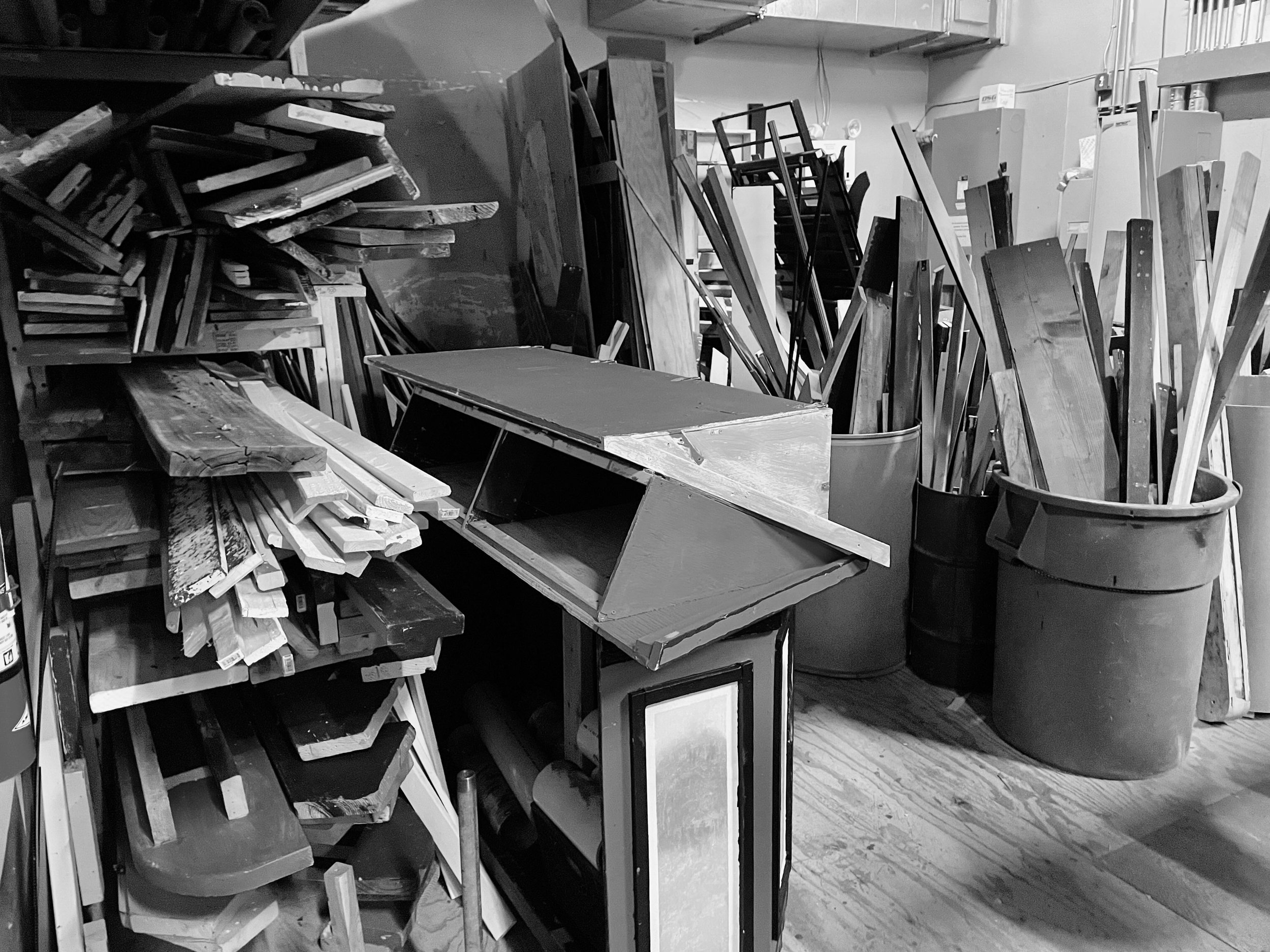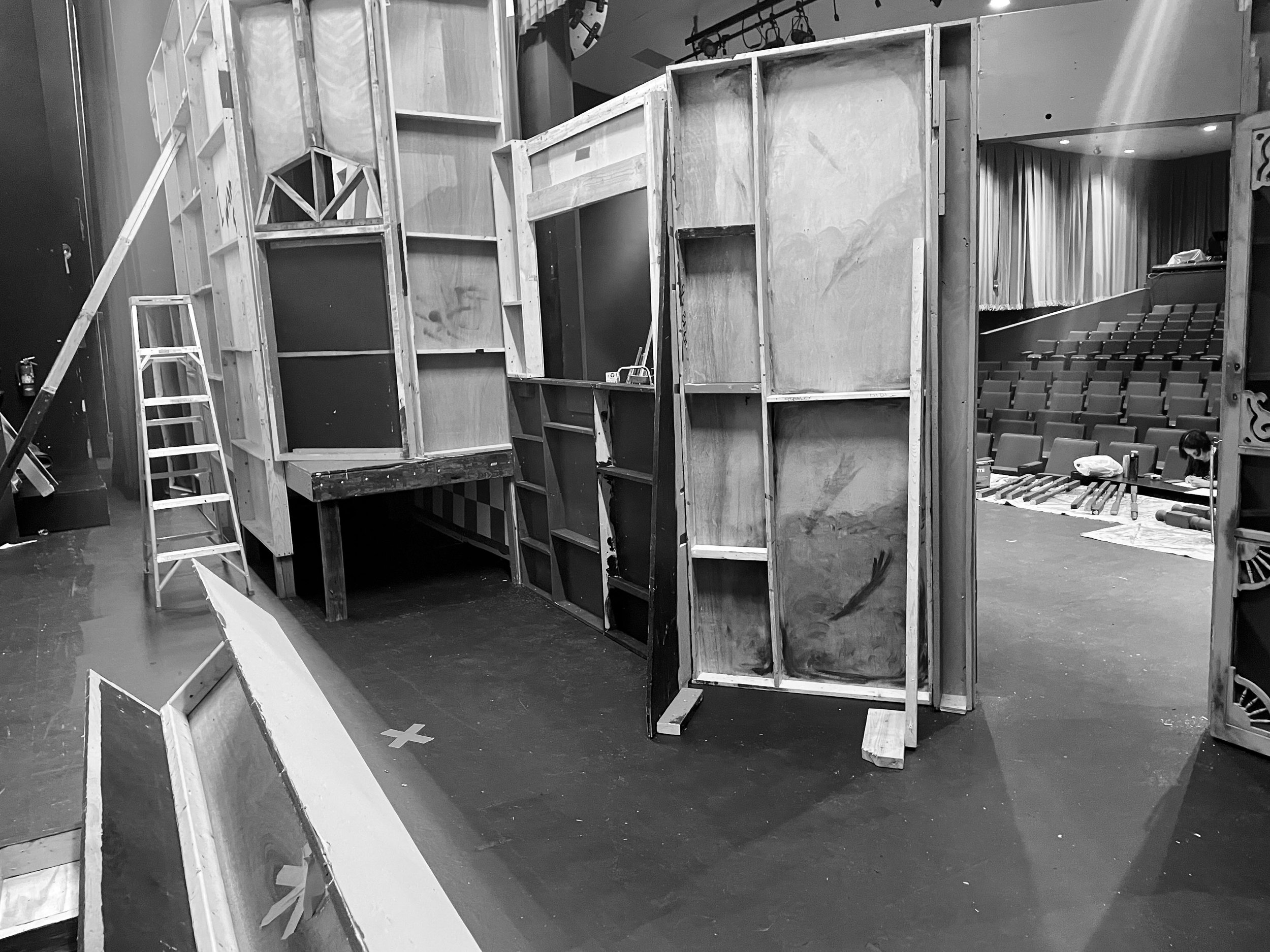Piecing It Togther
In his day, my father had the sharpest eye for roadside junk of any man in Western Arkansas. As a kid I was routinely thrown out of my seat and against the dash—we were not a seatbelt-wearing family, back then—because Dad had spotted something along the shoulder or in the ditch. Chains, screwdrivers, rubber straps, tire irons, baseball gloves. And of course, any good chunk of metal was reason enough to hit the brakes.
My mom would occasionally scold my dad, and I would roll my eyes. But I have to admit, Dad often found a use for the treasure he collected. Years after his passing, you can still find equipment in and around his shop that he crafted in part out of his roadside reclamations.
He would have enjoyed building set.
Anyone who’s been a part of a community theater knows what goes into creating the world in which the production happens. However sleek, colorful, majestic, or breathtaking a set might look under the bright lights of a performance, it’s most likely cobbled together from spare parts.
Almost every piece has a use somewhere in the build.
Like most small farmers, community theaters are chronically underfunded, meaning we have to make the most out of every paintbrush and staple, every scrap of wood. Almost everything in the storage room upstairs has appeared in multiple shows, with some pieces so frequently used that they qualify as Easter eggs for season ticket holders. One of the most enjoyable rituals of each build is reminiscing about a set piece’s previous lives. “Oh! This was Sherlock’s apartment in Baskerville! Remember how long it took to paint that wallpaper design?”
Philosophically, this extreme frugality is pleasing in its egalitarianism. It’s not just the big 4’ x 8’ flats that get put into storage once a production ends. Screws are taken out and thrown in a bucket for the next show. Random boards used to tie one thing together or hide the flaws in another go into one of the big cardboard tubes upstairs, just in case we need them later. In order to be deemed unusable, something has to be broken beyond repair or too narrow to hold a screw.
Over the course of a season, very few of the construction pieces upstairs go unused. When you view the scraps as building blocks instead of clutter, it’s amazing how useful they become.
I don’t want to get ahead of myself here. As much as I enjoy drawing connections between theater and real life, there’s a distinction between a facade meant to kickstart your imagination and solid construction in which you can actually live. Theater is vital to the human experience, and its play-pretend nature lends us courage to explore things we could never get to in our day-to-day lives. But you can’t make it in the world by simply putting on a pretty face. I don’t want to suggest that you should try.
I also don’t want to suggest that every little thing is helpful. Every now and then, a platform gets so weakened from time and use that it’s dangerous to stand on. Sometimes broken things have sharp edges that have to be dealt with, either by filing them down or ushering that particular piece into the dumpster.
Still, I think we would do well to approach the clutter of our lives less like Marie Kondo and more like a set designer. I get the attraction of throwing away what doesn’t spark joy, but there’s much to be said for learning to use what is available to you at a given moment. On the material side, such a practice saves us money and creates less waste. I’m on board for those reasons alone.
But the way we treat our things often bleeds over into the way we view the people around us. If we insist perfect materials to construct our perfect ends, it’s easy to view others according to their usefulness to our agendas rather than as fellow humans traveling the same road we are. Carry this to its logical end, and people who don’t fit are as disposable as a 9” one-by-four.
By some definitions, my father would have been considered a hoarder, and I can’t really argue with that. He left behind coffee cans full of random bolts and piles of angle iron pieces recovered from the ditch near the steel mill. I’m neither a mechanic nor a welder, so there isn’t much I can do with those things. That responsibility fell to my brother, who has more of the skills necessary to make use of what I would consider junk. He’s kept most of it.
Backstage for set built at Area Community Theater.
Personally, I am not the same level of collector as the other men in my family. I don’t have the same sharp eye for discarded things. Plus, my career has led to more moves than I would have liked, which leaves less time and space for things to accumulate.
What I have gathered over the years is a wide variety of relationships with people from all walks of life, not to mention a bucket full of experiences that give me both memories to treasure and reasons to hope. I may not have the components I need to construct the life I think I want, but I have a vibrant, wonderfully tangled storage room that is mine to draw from.
It’s enough to set the stage for whatever my next act will be, even if it is just pieced together for now.


